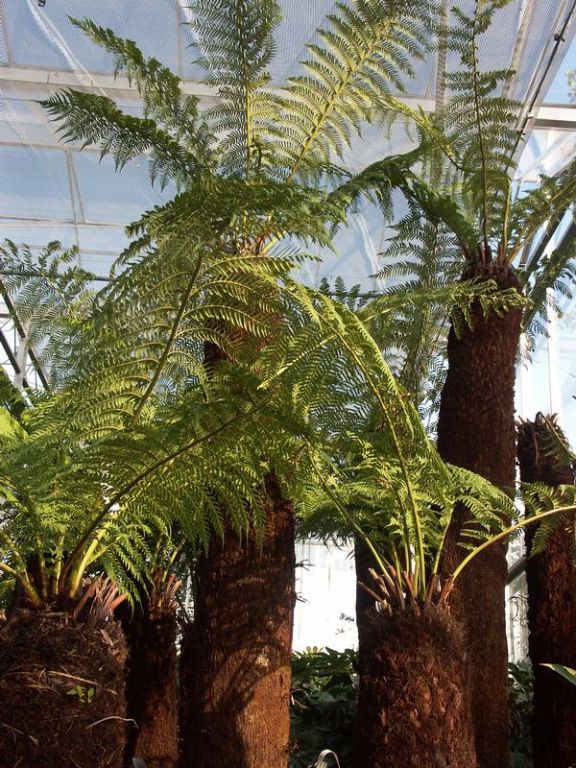Dicksonia antartica

Description:
Dicksonia antarctica is the most commonly grown tree fern in colder climates and is now very popular as a design feature in many gardens giving a tropical and exotic feel. The foliage appears in spring from the top of the trunk, unfurling from the centre to open up into large, rich green fronds. Ensure space is given to allow the ferns to grow uninterrupted. Thought they have proved hardy, it is always best to grow in a protected site and protect young plants in winter.
Climate/Position: Partial to full shade in a protected site.
Height/Spread: Up to 6m height by 6m spread of fronds. Allow space for the wide spreading fronds to expand uninterrupted.
Soil Requirements: Humus-rich, neutral to acid soil, Free draining soil to ensure plants do not remain wet in winter.
Pruning: Remove old fronds as they die off and unless in a very sheltered site then remove all fronds in winter so stem can be protected.
Special Requirements: Trunks of young plants can be protected by wrapping in straw with chicken wire over winter.
The species is unique to Australia and Tasmania where it is abundant in cool damp forests. Carbon dating techniques have shown tree ferns date back to the Jurassic period. Tree ferns are unique instead of having a woody stem covered in a protective bark like a tree for instance, the trunks or caudex of tree ferns are composed of rhizomes modified to grow vertically. The rhizome carries nutrients to and from the fronds and roots. The trunk of roots allows moisture to be retained. At the top of the trunk there is a growing tip which produces a number lush green of fronds which act like leaves and can grow to several metres in length. This Australian tree fern came into the UK at the end of the 20th Century aboard ships returning from Australia. The ships carrying goods back from the colonies used tree fern trunks as ballast or weights in their holds to prevent cargoes moving about in heavy seas. At docks around the South West of England the trunks were discarded on the quayside when ships were unloaded. It was here that people noticed these trunks were growing new fronds. Some of the oldest tree ferns in the UK can still be found at gardens such as Trewidden and The Lost Gardens of Heligan.
